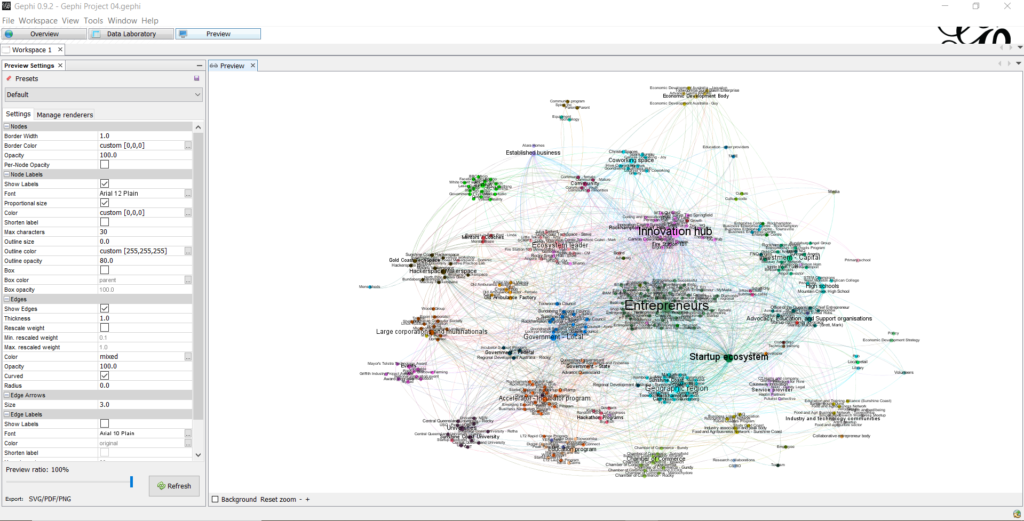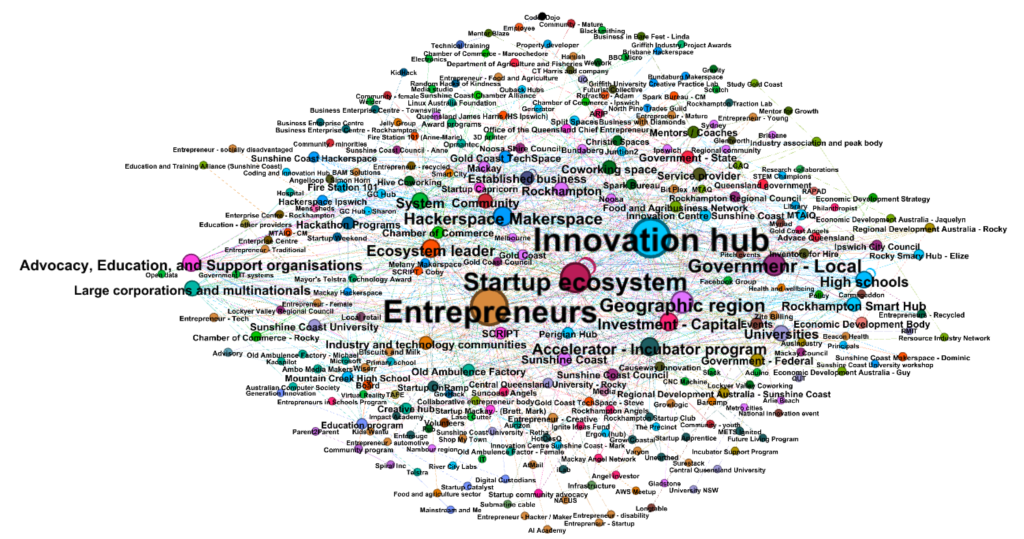Social Network Analysis with Gephi – location versus network
Playing with Gephi over the past few days to do some social network analysis on regional innovation ecosystems. Actors are colour coded and grouped by roles. I am in the process of researching more into Social Network Analysis so I can do it better as I get more familiar with the Gephi platform and figure out what the data is telling us.

This is a continuation from the work I did a few months back which looked impressively busy but perhaps was not as useful.

There is something in an automated social network analysis process for regional ecosystems. At a recent conference the question was raised as to whether ecosystems are inherently tied to place. The use of the ecosystem metaphor would indicate that it is, although Wal & Boschma (2009) comment on the debate of space versus network.
A fundamental debate in economic geography concerns the question whether places are more relevant for the competitiveness of firms, or whether networks matter more (Castells 1996). While the concept of ‘space of places’ expresses the idea that the location matters for learning and innovation (being in the right place is what counts), the concept of ‘space of flows’ focuses more on the idea that networks are important vehicles of knowledge transfer and diffusion (meaning that being part of a network is crucial). Surprisingly, this debate has, however, not been a real issue in the cluster literature until quite recently. In a nutshell, the cluster literature claimed that regions are drivers of innovation and economic development: firms in clusters benefit almost automatically from knowledge externalities that are ‘in the air’, as Marshall once put it. This is because tacit knowledge travels more easily across short distances, and shared institutions at the cluster level further facilitate the effective transfer of knowledge.
